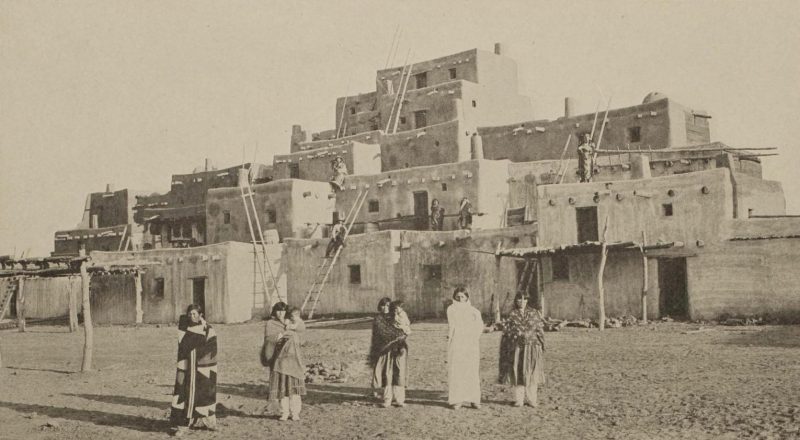Just one mile north of the modern city of Taos, New Mexico stands Taos Pueblo, an ancient and mesmerizing reminder of a once-thriving Native American society.
Home to the Tiwa-speaking Puebloan people, it is one of the oldest continuously inhabited community in the United States.
This unique community has been designated a UNESCO World Heritage site, spans over 95,000 acres of land, and currently houses about 4,500 people.
The Taos Pueblo is a member of the Eight Northern Pueblos, a collection of peoples who speak variants of the Tanoan language. Archaeologists believe that the Taos Indians settled along the Rio Grande after migrating south from the Four Corners Region on the Colorado Plateau.
This migration was likely driven by the search for water and resources after a prolonged period of drought in the 13th century.
Throughout the early years of the Pueblo’s existence, it served as a focal point for rapidly expanding trade routes between other Rio Grande valley tribes.
The community was the site of an annual trade fair celebrating the agricultural harvest that attracted more traders to the region.
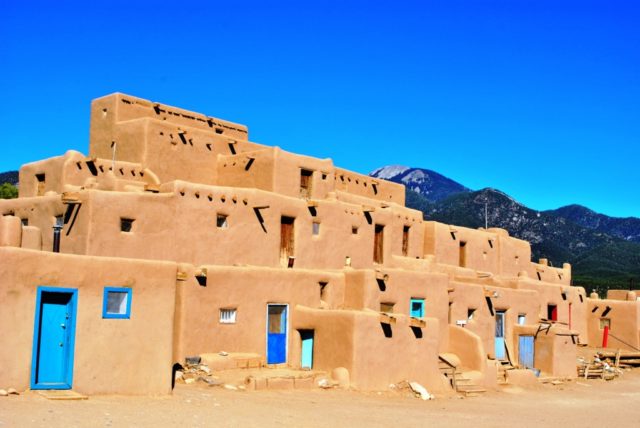

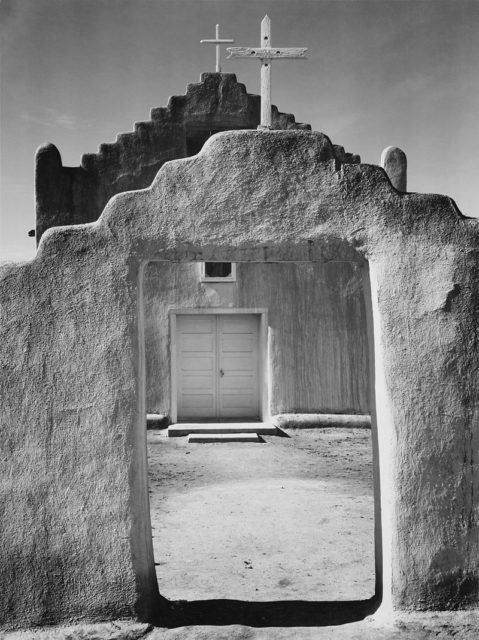
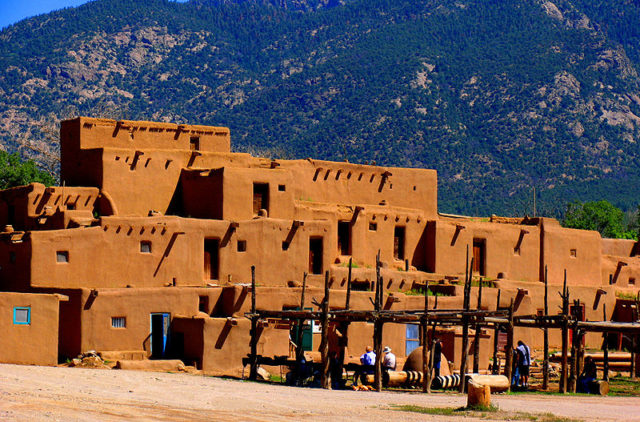
In 1540, the expedition of Spanish explorer Francisco Vasquez de Coronado arrived in Taos Pueblo, searching for the legendary Seven Cities of Gold.
The Spanish presence in the region continued in spite of opposition by Native peoples, and settlers built the mission of San Geronimo de Taos in 1620.
Tensions between the invading Spanish colonists and Native communities escalated throughout the 1600s and finally broke in the 1660s.
Angered by the continuing colonial presence, imposition of foreign culture, and religious oppression, a group of Native people attacked and destroyed the Spanish church.
Though the mission was later rebuilt, it was destroyed again in the Pueblo Revolt of 1680.
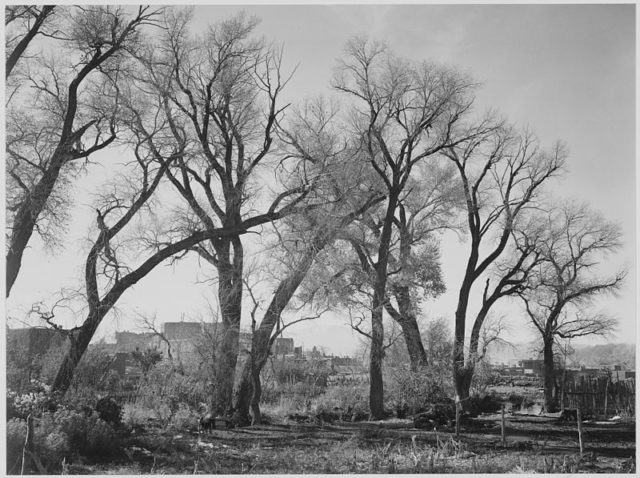
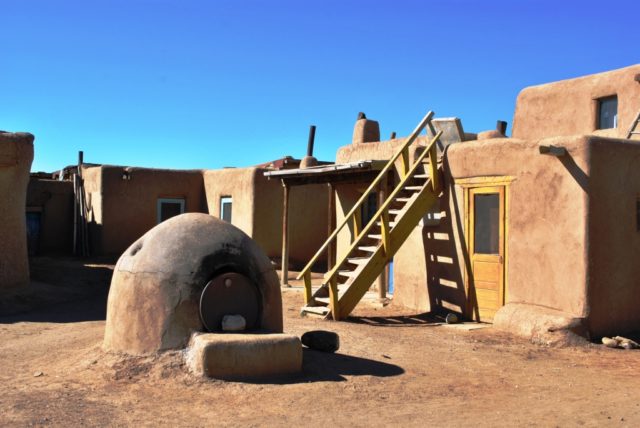
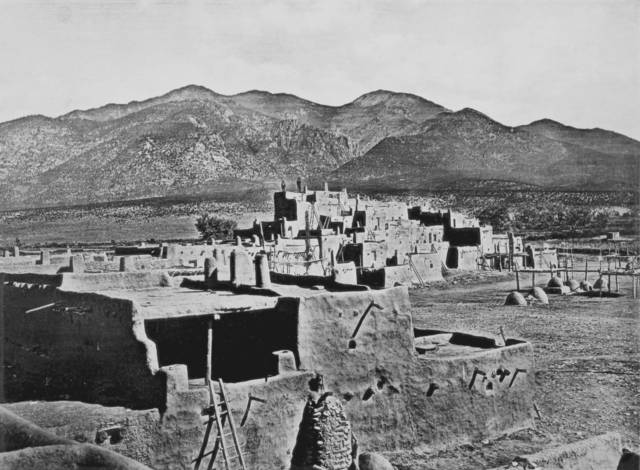

As time went on, the local Taos people and the colonists shifted into an uneasy detente and united to defend their territory against invading forces from the Ute and Comanche tribes.
By the turn of the 18th century, the Church of San Geronimo de Taos was under construction without any active resistance by the Taos locals.
After so many decades of close coexistence of Taos and Spanish people, religious and cultural influences were inevitable.
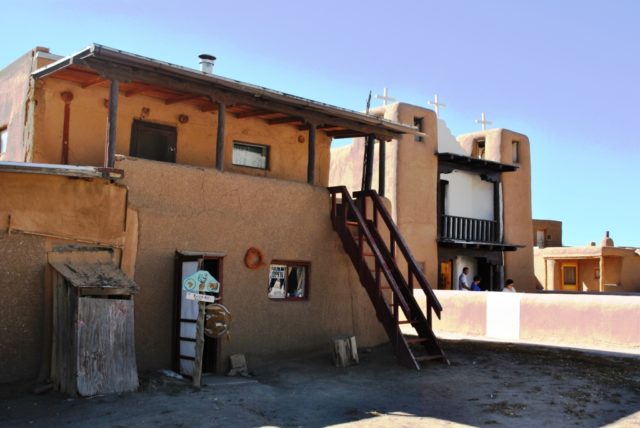
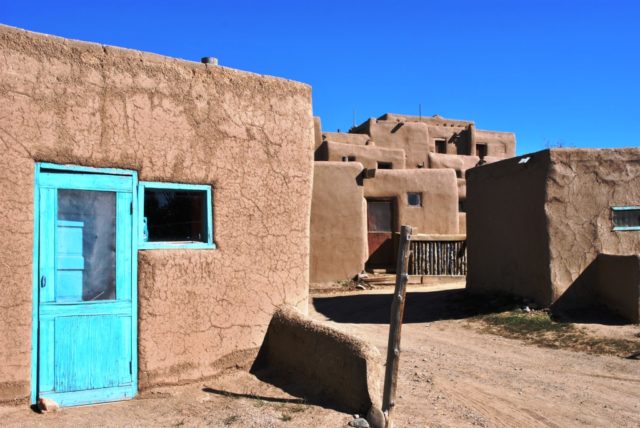
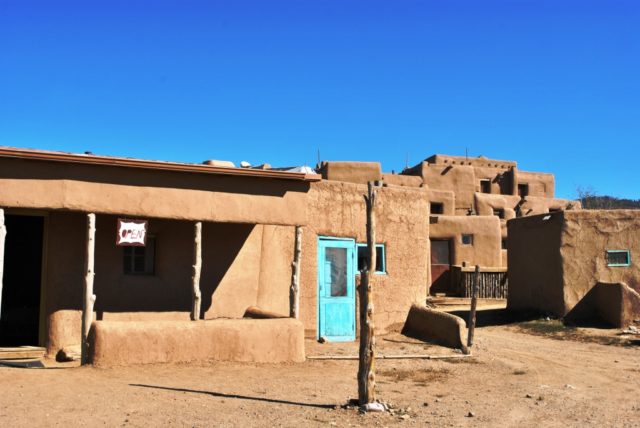
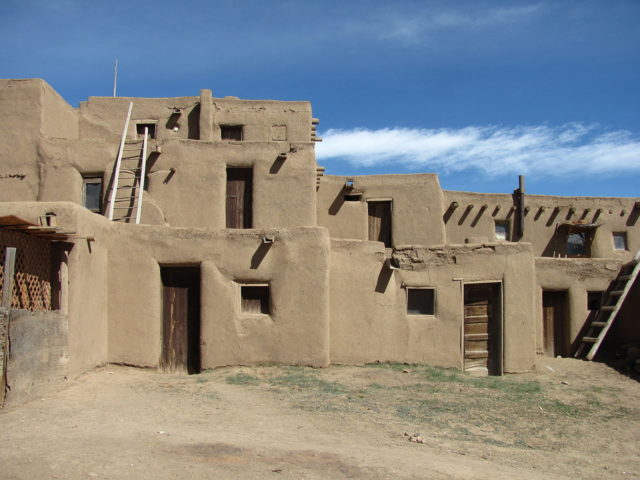
The name Taos is itself a colonial name, derived from a Spanish word for village. The correct Tiwa name for the community is ȉałopháymųp’ȍhə́othə̀olbo or At Red Willow Canyon Mouth
